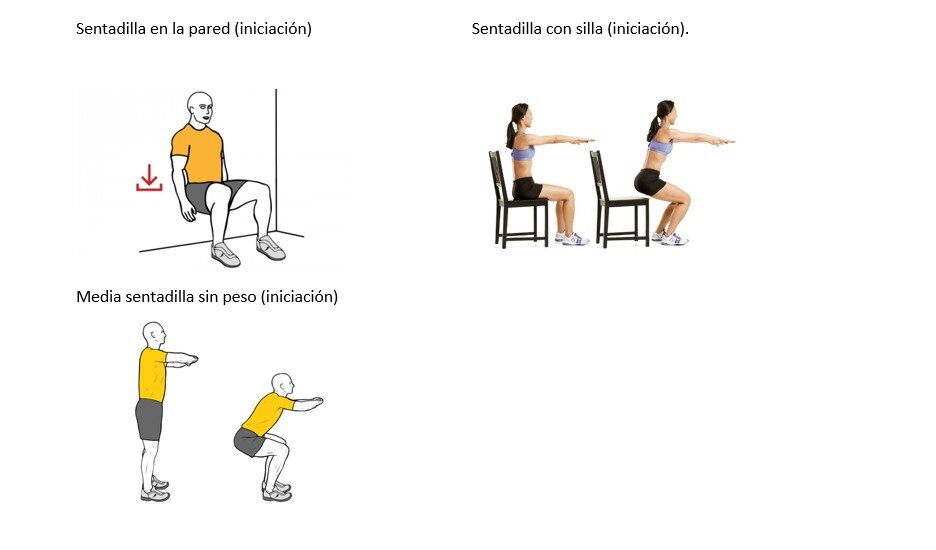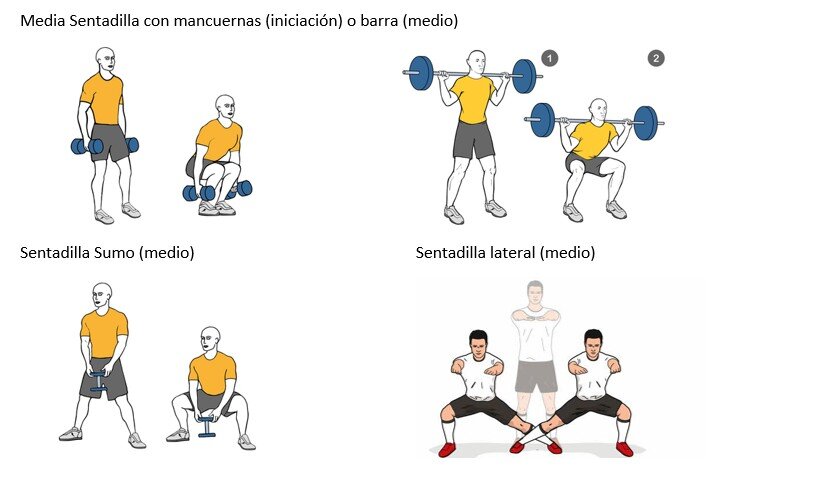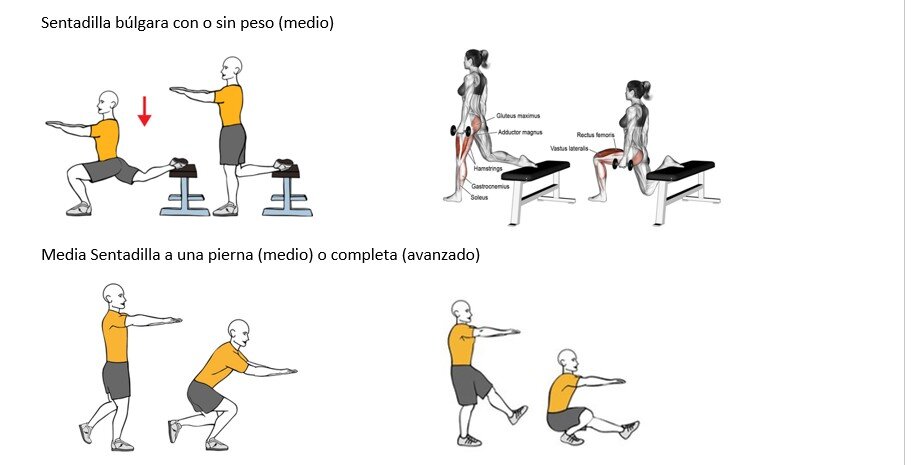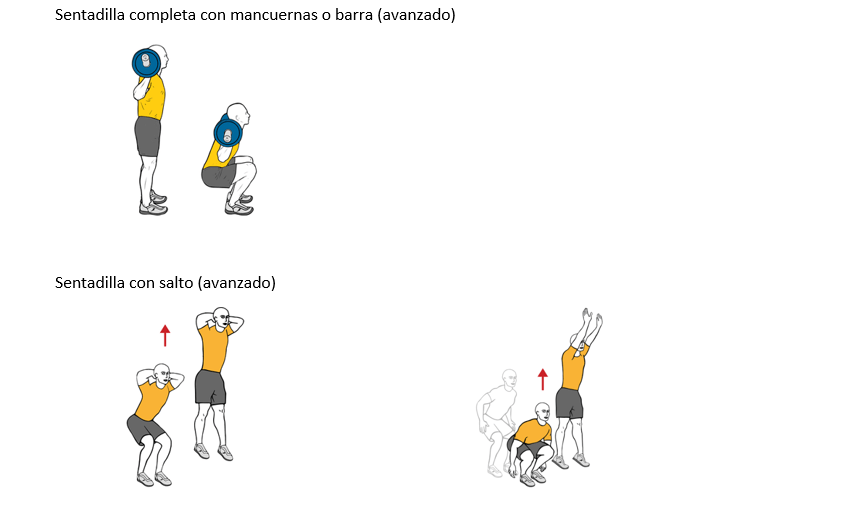Benefits of squats
The squat is a widely used exercise in strength training, both with and without external load.
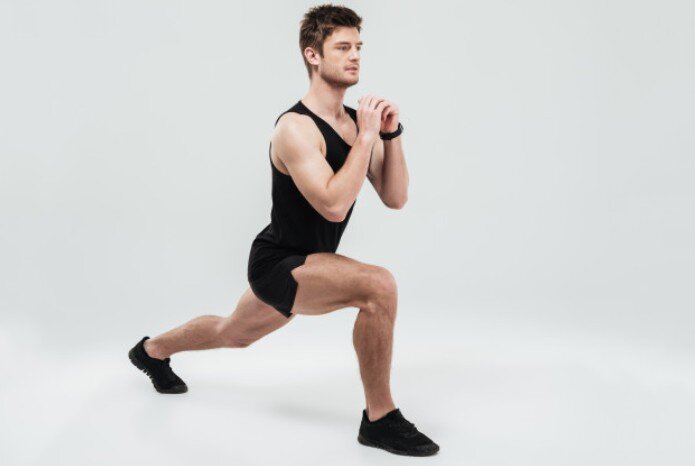
Often there are people who think that the greater the complexity of an exercise, the greater the benefits it will bring us.
I am sorry to tell you that it is a wrong thought, exercises as “simple” as squats can bring you many benefits in various sports disciplines.
The squat is a very popular exercise in the strength trainingboth with and without external load.
Perform them with good essential technique
It may seem like a simple exercise, but it requires proper technique in its execution, so it is very important to keep the following points in mind:
- The feet are placed parallel, facing forward or slightly out
- The weight or greater support should fall on the back of the feet, without taking the toes off the ground
- In the case of picking up a barbell, the elbows must point towards the ground
- The gaze should be focused forward with the head aligned on the spine
- The torso should be kept forward and up, with the buttocks slightly out
- The abdomen must be activated at all times (feeling of bringing the navel in)
- The knees should not be rotated inward and may extend past the balls of the feet.
It has many benefits
Likewise, it is an exercise with many benefits, among which we highlight:
- Increased endurance, a toned muscle is stronger than a weak one
- Strengthening of the joints, tendons and ligaments also benefit from the work done
- Bone strengthening, including impact variants (jumps) improve bone density
- Improved joint mobility, with proper training you can improve mobility in the ankles, hips, spine and knees
- Increased strength
- Increased muscle mass
- Improves overall health, because strength training improves everyday aspects such as climbing stairs or walking.
- Decrease in fat mass, the increase in muscle mass together with the burning of calories from exercise helps to reduce fat mass.
Recommended for cyclists
In the case of cyclists, the greater the power applied to the pedal (which we can measure with the help of a potentiometer), the greater the distance you will travel with each pedal stroke.
There is no other way to increase power than with strength work.
The squat can be a good option since the main muscles involved in this exercise (gluteus maximus, quadriceps, hamstrings mainly) have a main function in pedaling as we see in the following image.
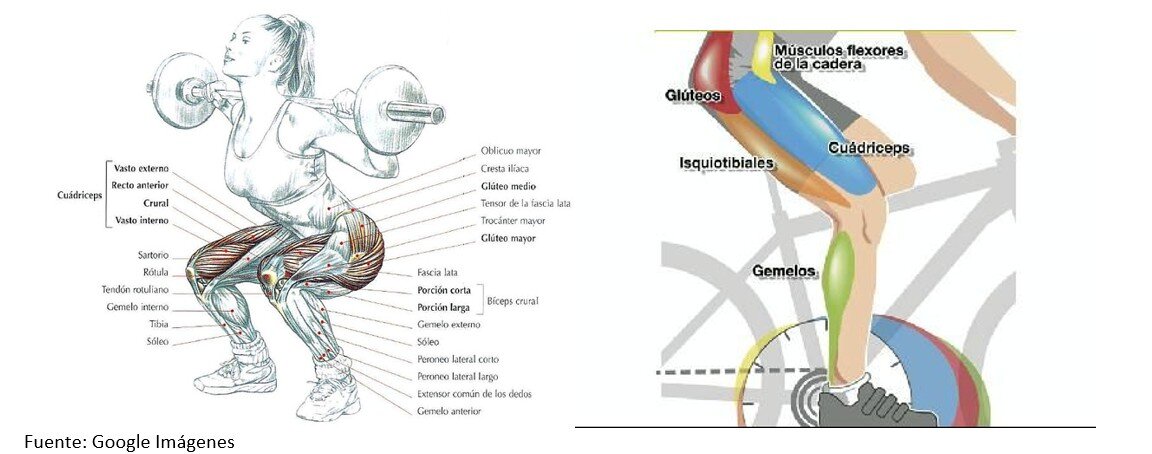
As you can imagine, they are not only beneficial for cycling, but other sports such as running and trail also require strong and resistant lower body muscles, and we can achieve this with squats.
Squat exercises
Here are several examples of progressive squats in terms of their degree of difficulty and strength and technique requirements so that you can adapt them to your level while minimizing the risk of injury:
As you can see, you don't even need a specific material to start squatting.
So we hope that the simplicity and the amount of benefits that its realization supposes will encourage you to start strengthening your legs from today.

Dra. Science of Physical Activity and Sport
There are no previous results.







